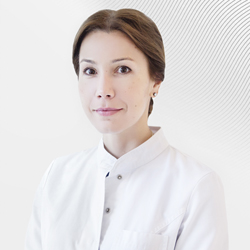In some cases, the diagnosis of coronary heart disease (CHD) can be assumed with a high degree of probability after a careful study of the patient's complaints and his lifestyle. An electrocardiogram helps clarify the diagnosis (recorded at rest and during exertion). If the heart muscle has been damaged, then a cardiac ultrasound (echocardiograph) is of great help in diagnosing coronary heart disease along with MSCT (multi-slice computed tomography) of the coronary arteries. However, the "gold standard" study for diagnosing this disease is coronary angiography.
Coronary angiography creates a digital image of the arteries of the heart, which is received after filling them with a radioopaque substance. This method allows us to see the cause of the disease, quantify the degree of narrowing of the arteries, and in some cases, use special tools to remove the narrowing directly in the radiology procedure room.
Further treatment tactics for the patient are determined on the basis of expert analysis of the data provided by the coronary angiography.
In our center, coronary angiography is performed by highly qualified physicians who have undergone training in hospitals in the United States and the European Union.
PREPARING FOR CORONARY ANGIOGRAPHY
If there are medications you can not tolerate or if you suffer from any chronic illness, be sure to notify your treating physician, even if you think it is not related to heart disease. You must tell your doctor if you have an intolerance to iodine solutions or local anesthetics (novocaine, lidocaine).
One day before the study it is advisable to refrain from overeating and from eating foods that provoke fermentation in the gut (black bread, vegetables and fruits, natural juices). At the same time, please note that on the eve of the study you should not refrain from drinking liquids, and should drink ordinary noncarbonated drinking water. On the contrary, the day before the test you need to drink at least 1.5 liters of fluid throughout the day. This will reduce the risk of adverse reactions in the liver and kidney in response to the x-ray contrast agents, will reduce the risk of allergic reactions and the formation of blood clots in the vessels during the study.
An hour after the procedure, you must drink plenty of ordinary drinking water (up to 2 liters over 6-8 hours). You do not want to drink sugary sodas or juices as they increase the acidity of the stomach contents and increase gas formation and fermentation in the gut.
In the morning (the day of the study) do not eat. But continue to take your medications as scheduled and prescribed by your treating physician!
THE CORONARY ANGIOGRAPHY PROCEDURE
The patient is placed on the angiographic table in a comfortable position. An injection of local anesthetic is given at the site of planned intervention. Depending on the goals and protocols of the study, either the radial artery in the arm or the femoral artery in the leg (usually on the right) will be punctured. An introducer with a hemostatic valve is placed, a special device for the sequential change of catheters and to reduce blood loss during the study. The catheter is run to the the region of the heart, through which a radioopaque substance is delivered and cineangiography is performed in several projections for a detailed examination of all segments of the arteries of the heart. This process may be accompanied by a feeling of warmth, but not pain. If something bothers you, you should immediately tell your doctor about any changes in your condition.
After removing the introducer from the artery, through which the intervention was performed, a suture is placed over the puncture holes, or the doctor will use his hands to compress the vessel until it stops bleeding. After applying a pressure bandage it is necessary to strictly comply with bed rest until you have permission to get up, which is given by the physician.
 Write to WhatsApp
Write to WhatsApp



